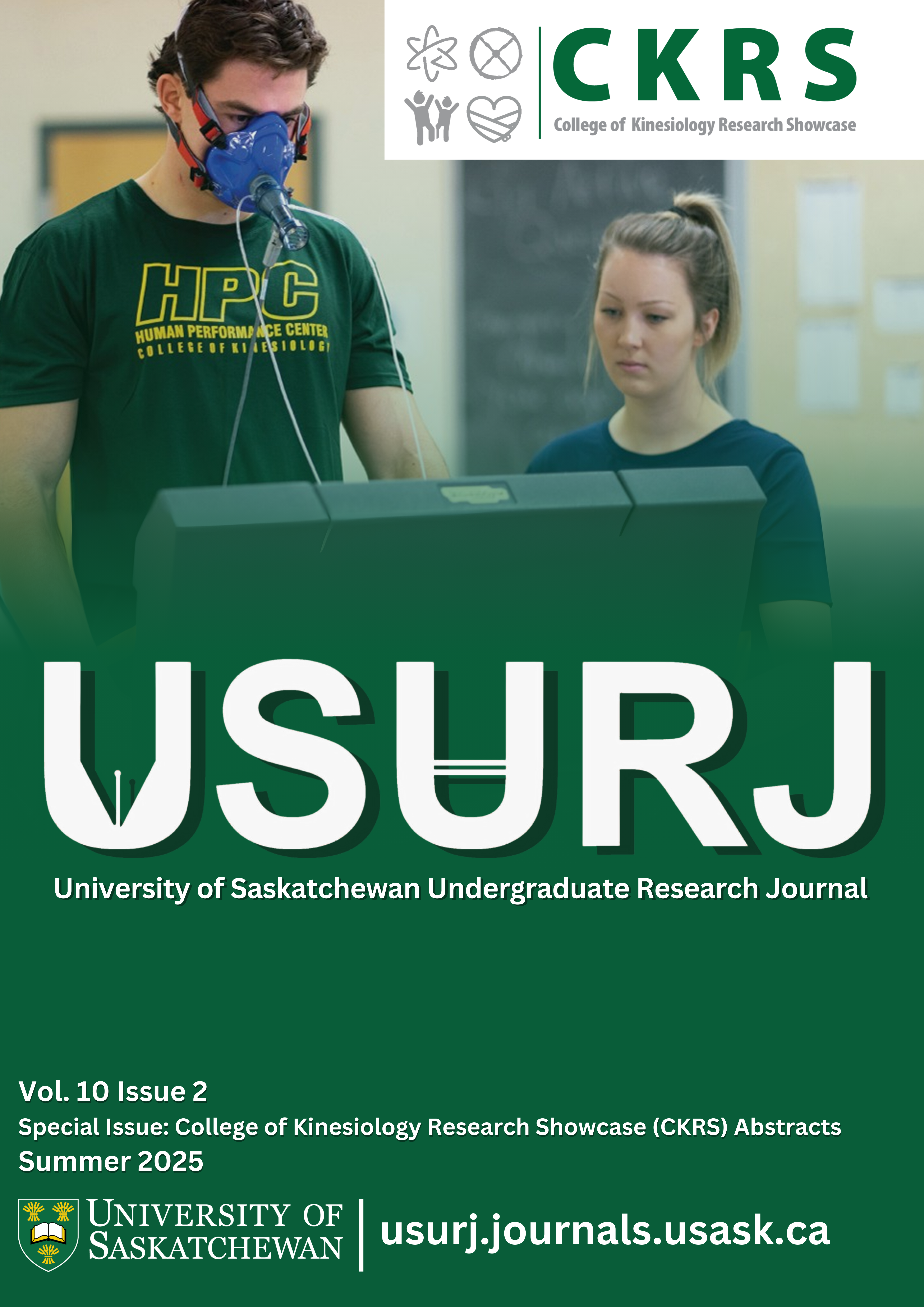The Last Game and The Years That Follow A Case Study on the Experiences of Participants in a High School Football Program
Main Article Content
Abstract
College of Kinesiology Research Theme: Child and youth health and development
Introduction: High school sports are recognized for their numerous positive impacts, as evidenced by extensive research. Despite this, the unique experiences of individuals involved in specific sports, such as football, remain underexplored. This study aimed to address this gap by examining the perspectives of coaches and former student-athletes who participated in one Saskatchewan high school football program that was intentionally structured to foster character development.
Methods: This study employed an intrinsic case study design to explore the perspectives of former participants in the described high school football program. Using snowball sampling, two coaches (minimum 3 years of experience) and four former student-athletes (graduated between 1 - 6 years prior) were recruited. Data were collected through semi-structured interviews and document analysis. All interviews were transcribed, and documents were reviewed, with key findings recorded in a research journal. Finally, reflexive thematic analysis was employed to identify and interpret themes within the data.
Results: Analysis of documents, as well as insights from coaches and former student-athletes, revealed three key themes. The first theme explores how high school football serves as a microcosm of life’s emotional fluctuations, exposing athletes’ raw character during extreme highs and lows. It examines how the prevailing win-focused framework contributes to these emotional fluctuations, which can serve as opportunities for character development, while also contrasting this framework with the ideals promoted by coaches and high school football regulatory bodies. The second theme explores the design of the program and the coaches’ intent behind its structure, which forms the foundation of the program. Specifically, it investigates the elements coaches have incorporated into the framework, how they implement their approach, and the underlying motivations behind each structural decision. The third theme addresses the experiences this program’s design and intent facilitated for both coaches and former student-athletes. Coaches, having observed multiple program iterations, identified both beneficial (e.g., strong relationships, team camaraderie, and core values) and problematic elements (e.g., work-life balance, tough playtime decisions, and limited reach with some student-athletes). Former student-athletes reflected on how the program shaped them, highlighting both positive influences (e.g., development of life skills, community and relationships, and the sport itself) and negative influences (e.g., coaching challenges and discipline dynamics, balancing demands and expectations, and physical and social risks).
Conclusion: The participants' insights offer a deeper understanding of their experiences in this unique football program. These perspectives provide valuable information to high school coaches seeking to develop student athletes' abilities and characteristics beyond the playing field.
Downloads
Article Details
Section
Articles: USURJ’s current Publication Agreements apply a Creative Commons Attribution-NonCommercial License (CC-BY-NC) by default. The CC BY-NC license lets others remix, tweak, and build upon work non-commercially. The author(s) can choose a different CC license, as outlined in https://creativecommons.org/about/cclicenses/. Please see the PDF for each article to determine what license is applied to that article. Author(s) can also request to reserve all copyright (All Rights Reserved). If there is no indication for articles published before September 2020, assume the author retains all rights beyond those necessary for publication by USURJ. All articles published after September 2020 will apply one of the aforementioned CC licenses. See the Publication Agreement under the Submission Preparation Checklist or Author Guidelines for more information. Artwork: All copyright for the original artwork remains with the artist unless they wish to apply a Creative Commons (CC) license to the artwork. Please see the PDF for each artwork to determine what license is applied to that artwork.
